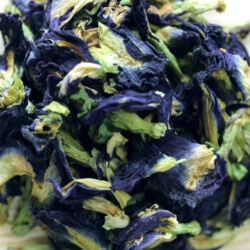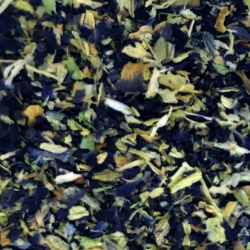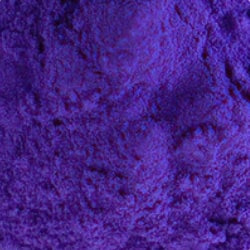About Japan Blue(Butterfly pea Blue)
Japan Blue(Butterfly pea Blue) A butterfly blue powder born of Japanese technology
Bringing a new blue color to the food industry using only natural raw materials.
Tsujiko and Anchan Natural Blue, as a food ingredient business, is cultivating safe, secure and natural organic herbs in Laos and Thailand in Southeast Asia.
Based on Japanese production control, we are cultivating safe and secure herb ingredients through thorough cultivation and technical guidance.
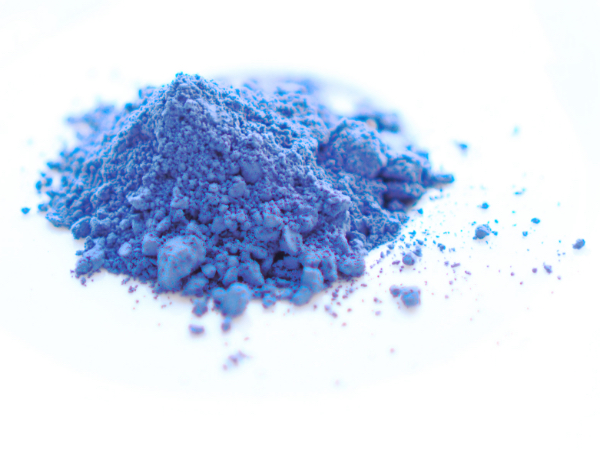
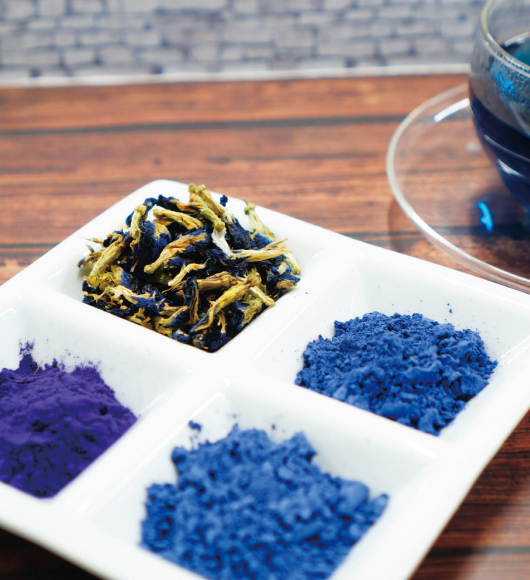
Among them, we found the blue herb "Butterfly pea".
Herb that has precious blue color in nature,
We look in to it, We found this specific herb has various effects
and benefits for our health and beauty.
・Anthocyanins improve vision.
・Promotes hair growth and prevents gray hair
・Anti-aging effects through antioxidant action
・Improving and rejuvenating effect on skin quality
・Improving brain function
・Diuresis
・Anti-inflammatory
・Anti-anxiety
・Anti-hyperglycemia
・Anti-HIV
・Anticonvulsants
・Antibacterial action.
The secret of the blue color and benefits above comes from a type of anthocyanin called Ternatin, which is unique to Butterfly pea.
This component is very stable among anthocyanin, is rare among natural pigments, and does not fade easily with heat or light.
In addition, we keep the nutrients and color of the herbs to their fullest potential.
In order to make it more user-friendly in the food industry, we have been working on product development.
Butterfly pea
Carefully grown without the use of pesticides or chemical fertilizers,our butterfly
peas are hand-picked by our farmers.The harvests are inspected by Japanese
quality control as high quality raw materials and processed into a variety of
related products in our facilities.
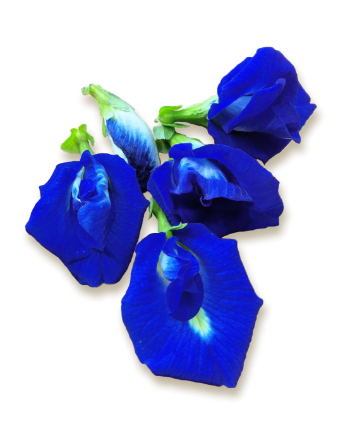
"The Secret of Asian beauty"Anthocyanin rich.
Butterfly pea,the magic blue flower contains rich anthocyanins.Ternatin, a spesific anthocayanin contain in butterfly peas is very stable and can produce a beautiful blue color .This beautiful blue flower has been widely adopted into the daily lives of women in southeast Asia, including Thailand and Malaysia, and is said to be the secret to Asian beauty.The infusions are looks like deep ocean and it will make time of relax.

Ternatin A1
Ternatin is a type of anthocyanin. It has a structure in which large sugars are boneded, which protects the hydroxyl group of delphidinin toprevent hydration, and has a very high stability compared to typical anthocyanins.
Color changing Tea.
Butterfly Pea is a magical help that changes color from bright blue to purple then pink. Adding an acid, such as lemon or vinegar, causes the anthocyanin to react and change color. Ideal for lemonade, unique frozen sweet that entertain your customers.
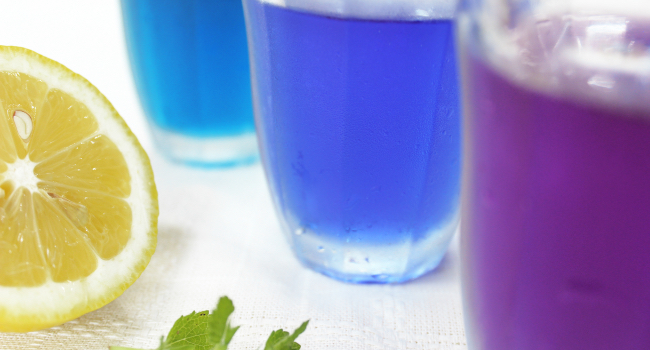

As a health drink
and as a natural pigment.
The bright natural blue, butterfly pea. On its own, there is only a hint of bean flavor and do not distract the flavor of food, so it can be enjoyed in a variety of sweets and drink, health supplement arrangements.
Difference between sterilized powder and extracted powder
Butterfly pea sterilized powder is fine powder made of 100% flower. Suitable application is Chocolate, candies, macaroons, bread, icing cookies, ice cream, gelato.
Butterfly pea extracted powder is spray dried blue-purple powder made by extract dried flowers with hot water and dextrin. It is 100% water soluble and suitable for beverage system (juice, alcohol, jelly, pudding etc.).
However, it is defined internationally as food additive and it is suitable as general food and drink additives in Japan.
It is registered as「CLITORIA TERNATEA flower extract」in cosmetic display name for cosmetic ingredients. It is applied to skin conditioning agent (hair restorer like a blue shampoo, conditioner etc.) mainly in southeast Asia.
Manufacturing process difference between sterilized powder and extracted powder is shown in below.

Application example of Butterfly pea sterilized powder is shown in below.
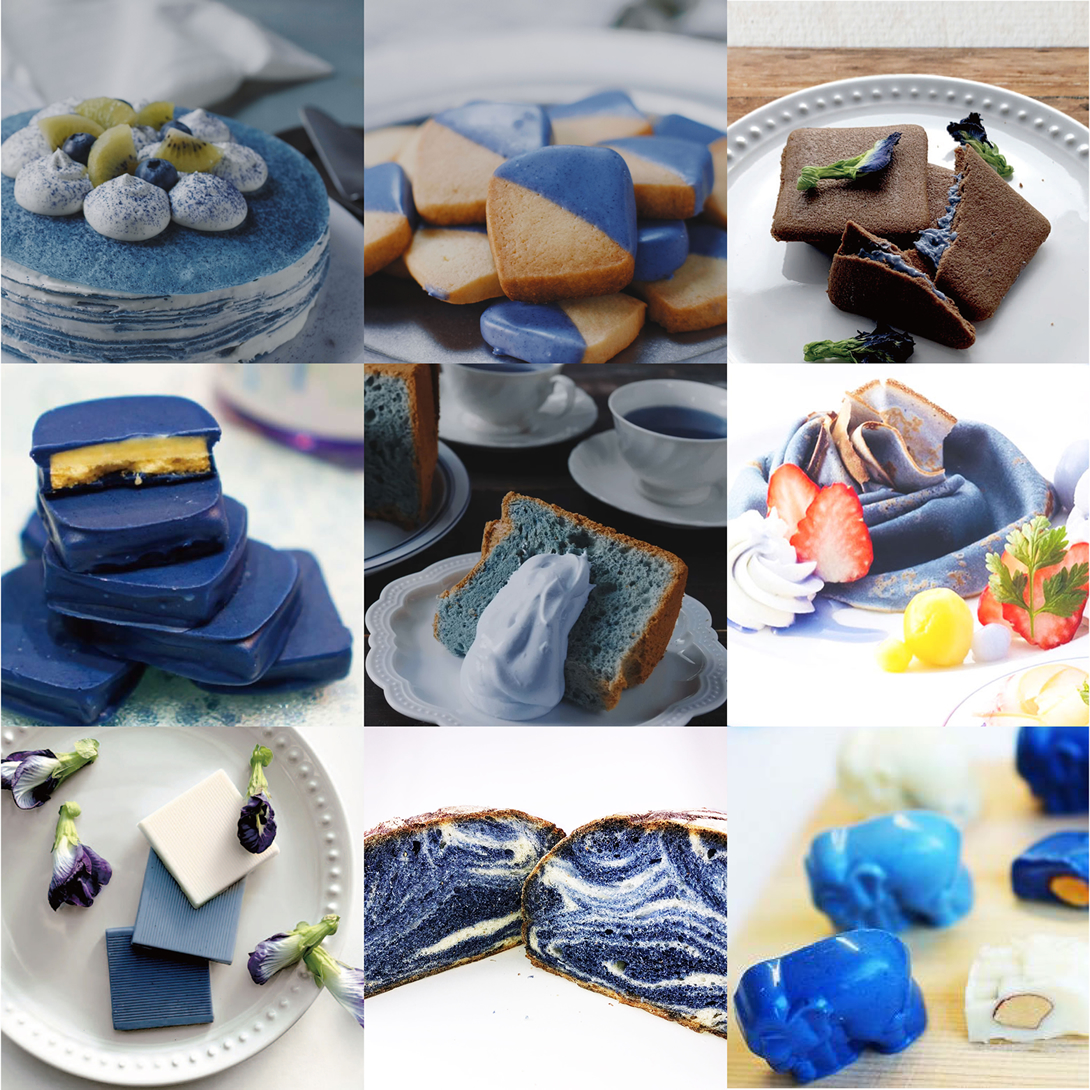
Application example pictures of Butterfly pea extracted powder is shown in below.
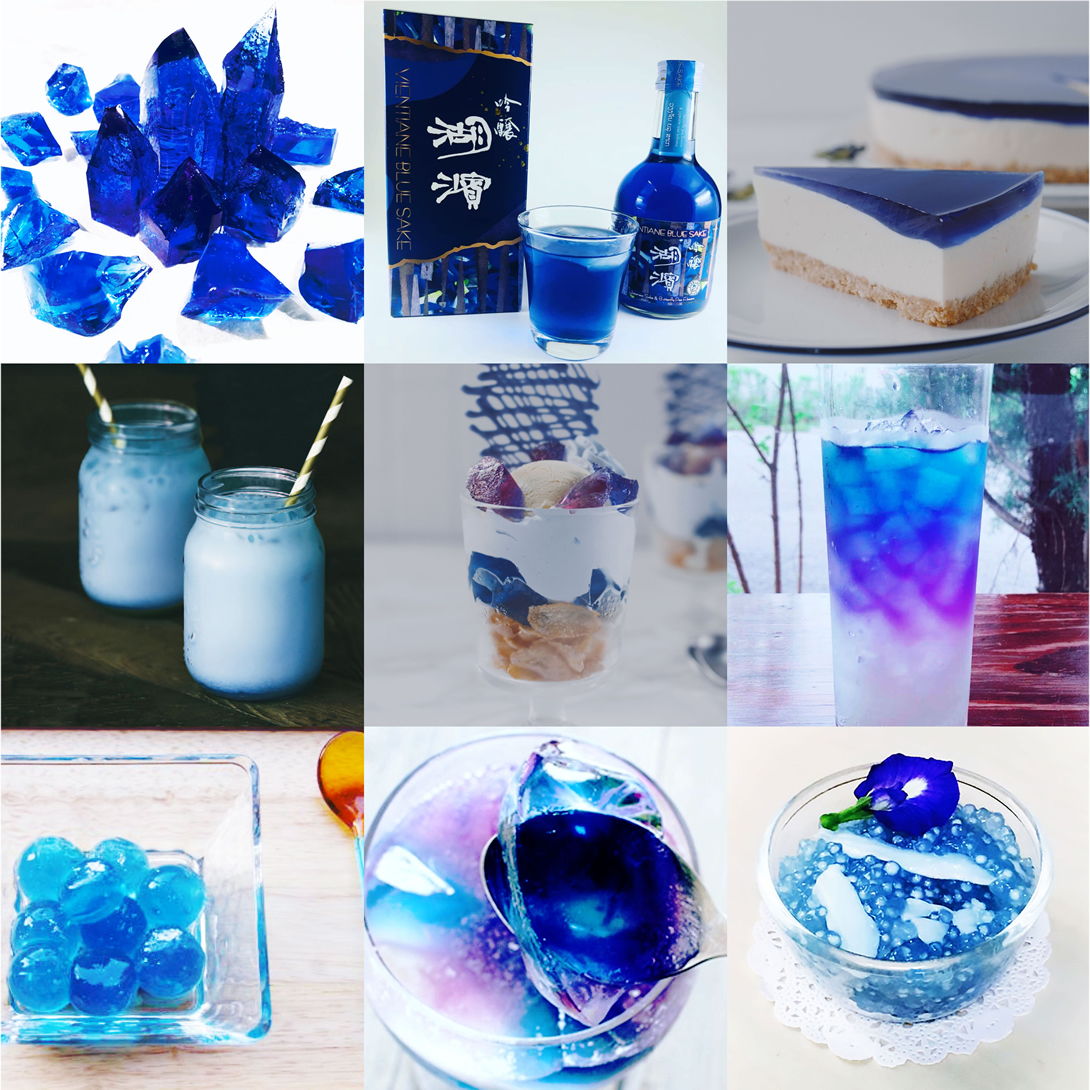
About Blue sterilized powder
Sterilized powder production flow is heated air dry of sun-dry flower, crush and Sterilization. Powder particle size is 10-20 μm very fine and water soluble. Sterilization method is our own technique using ball mill technology. No heat is applied during sterilization process to avoid damage of original functional ingredients of plants. This powder is processed at factory which comply with world standard HACCP and health and safety managed.
Sterilized powder is blue powder 100% made of Butterfly pea dry flower. So, this powder is 100% natural.
This powder can be used as food material and general food and drink additives (colorants) in Japan.
Pure beautiful blue food (cakes, chocolates, macaroons, noodles, amber sugar, bread, etc.) having high photogenic nature can be considered and created with this blue sterilized powder as material.

Characteristics of Blue sterilized powder
It is confirmed that blue fine sterilized powder can be handled as 100% natural material after scientific research for safety, solubility, heat, light, pH, alcohol stability, allergic properties and so on.
Especially for food use, color value and fading nature of natural color is #1 issue. Characteristics from our company and Analysis Center data is as follow:
1) Thermal stability: There is no reduction of pigment in 3 hours less than 80 degree C.
2) Light stability: Stability is improved under acidic but decline a little under alkalinity.
3) Alcohol stability: Pigment disappearance is not detected under alcohol.
4) pH stability: Since the blue component is ternatin (anthocyanins), color is blue in neutral range but violet to pink in mild acidity and acidic accordingly and green in alkalinity.
It is important to understand this character to use for food material.
Color change
Butterfly pea contains valuable natural blue color pigment but it is well known that color is changed by pH. This mechanism was introduced in a study by Chu (2016) 1). Anthocyanins contained in Butterfly pea show four forms and colors depending on pH.
That is, red color flavirium type in strong acid range pH 1-3, colorless carbinol base type in weak acidic range pH4-5, blue color kinoidal base type in neutral range pH6-7 and yellow chalcone type in weak alkaline range pH8-9. Anthocyanins contained in Butterfly pea change to these forms reversibly in response to pH changes and different colors are expressed by their balance when a person sees them.

Color change to violet, pink from blue when acid like lemon or lime juice are added. This is because the flavirium type is dominant.
On the other hand, color approaches to green like beautiful emerald green when baking soda is added and/or in hard mineral water because of the kinoidal base type and chalcone type is dominant.
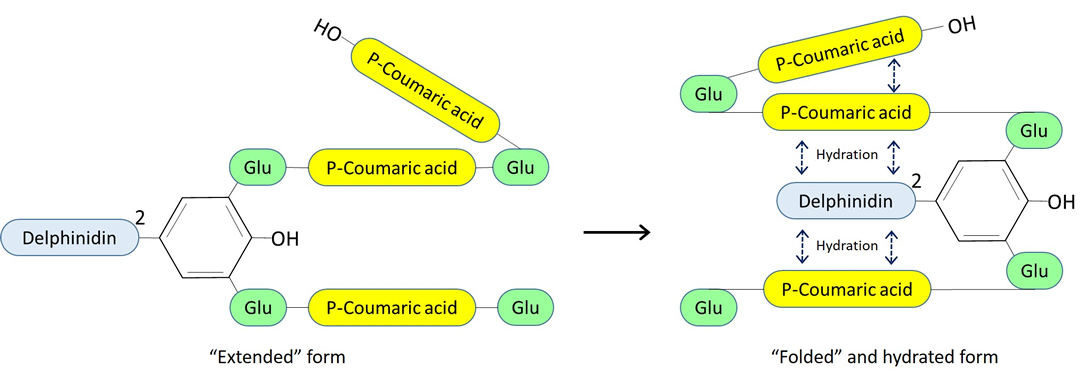
Color change
Color stability
According to Terahara and Nishiyama's research in year 2000, main blue pigment ternatins in Butterfly pea is extremely stable among anthocyanins because the side chain composed of glucose and coumaric acid of ternatins is folded in the aqueous solution, and the overlapping coumaric acid and delphinidin undergo a hydration reaction to protect the carbon at the 2-position of delphinidin, which leads to fading. 2).
Also Chu (year 2016) and Tantituvanont (2008) report adding sugar and/or pH adjustment can enhance Butterfly pea color stability.3) This phenomenon is confirmed by our company In-house experiment. When we expose different pH Butterfly pea extract aqueous solution to 80℃ heat, neutral range showed dye residual rate 87% after 3.5 hours against 97% acid range.
Also when we add sugar 20% (w/v) in neutral range, dye residual rate was improved to 91%. When we put these aqueous solution in refrigerator and exposed an average 3,500 lux in 15 days, acid range showed dye residual rate almost 100% against 75% neutral range.


After all, acidic is more stable than neutral, and it seems that the addition of sugar slightly increases the stability. For the application of liquid final product, adding acid like lemon and lime juice with sugar to adjust taste is recommended.
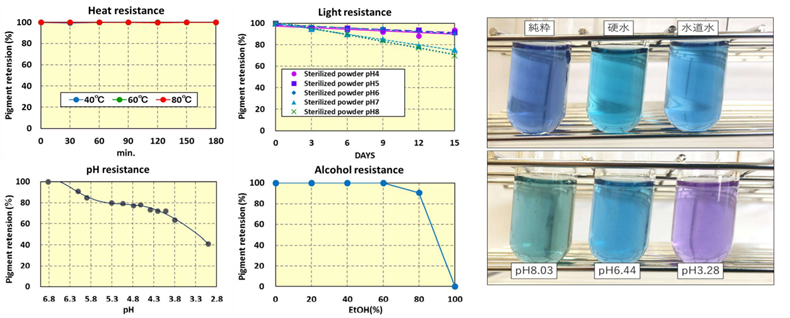
Characteristics of Blue sterilized powder
1) Chu, B.S., J. Wilkin, M. House, M. Roleska, M. Lemos. Effect of Sucrose on Thermal and pH Stability of Clitoria ternatea Extract. International Journal of Food Processing Technology, 2016, 3, 11-17
2) Terahara, Nishiyama. Study on antioxidant activity of Clitoria ternatea flower anthocyanin pigment. Urakami Foundation Research Report, 2000. 8: 17-27
3) Tantituvanont A., Werawatganone P., Jiamchaisri P., Manopakdee K. Preparation and stability of butterfly pea color extract loaded in microparticles prepared by spray drying. Thai J. Pharm. Sci., 2008, 32:59-69



